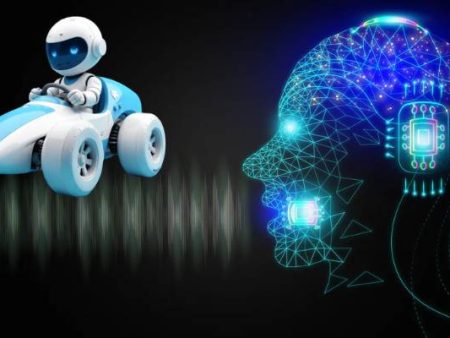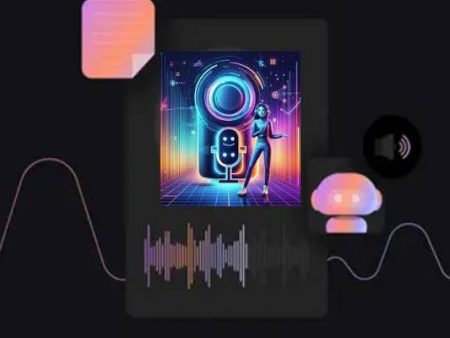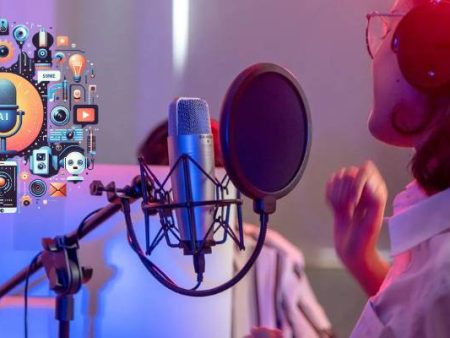A voice is more than sound waves. It carries history, personality, subtle shades of humor or fatigue. When we listen to Morgan Freeman narrate a documentary or hear a celebrity read an audiobook, there’s a recognition, almost visceral.
We feel grounded. And yet, in the same digital world where algorithms finish our sentences, there’s now software capable of finishing them in our own voices.
So the question many of us are asking: will technology production audiobook systems — driven by artificial intelligence — eventually replace human voice actors? Or is there something inimitable about the human larynx and mind that machines will never truly capture?
This isn’t just about jobs, though employment matters deeply. It’s also about authenticity, about the ethics of sound, about whether trust survives when we can’t easily tell machine from human.
The Rise of AI Voice Technology
How We Got Here
Text-to-speech began decades ago as robotic monotone. But breakthroughs such as Google’s WaveNet and OpenAI’s Whisper family of models shifted the paradigm. Instead of stitching audio fragments together, neural networks now generate fluid, natural down cadences.
Companies like ElevenLabs, Respeecher, and WellSaid Labs are already licensing synthetic voices for commercials, training, and gaming.
In fact, the global AI voice generator market was valued at around USD 3.5 billion in 2023 and is projected to expand dramatically by 2030, according to Grand View Research.
That growth reflects adoption across industries: film dubbing, marketing, assistive tech, smart devices, and increasingly, audiobook narration. Amazon’s Audible has experimented with AI voices to scale its catalog, stirring heated debates among narrators.
Why Studios and Businesses Are Tempted
Let’s be honest: synthetic voices are cost-effective. Hiring a skilled human can cost hundreds to thousands of dollars per finished hour.
An AI subscription might charge a fraction of that. When production houses need to churn out thousands of training videos or onboarding materials, the math looks simple.
There’s also scalability. An AI model doesn’t need rest. It doesn’t demand residuals. It can adapt to multiple languages nearly instantly. That appeals to global media giants eager to localize content quickly.
Even small businesses are leaning in. Start-ups can launch podcasts or explainer videos with cloned voices, avoiding studio rentals. The barriers to entry are lower, so more voices fill the air — though not all of them human.
What Human Voice Actors Bring to the Table
Yet, those who’ve listened closely know there’s something missing. Humans embody experience. A trained actor can bend a sentence in countless ways, layering sarcasm with warmth, or drawing a pause that makes the heart catch.
Consider animation. Could “The Lion King” have the same emotional punch if Mufasa’s lines were generated by code rather than James Earl Jones? Probably not. The cultural weight of an actor’s career infuses the performance.
And then there’s improvisation. Human actors often reshape lines in real time, giving directors unexpected flavors. AI systems, no matter how advanced, still work within statistical confines. They can simulate emotion, but is it empathy or only the sound of empathy?
Ethical Questions and Consent
This is where things get thorny. Many AI models are trained on scraped audio. Voice actors report discovering clones of themselves online, built without consent celebrity ethics voices ever being considered. If your voice is your livelihood, that feels like theft.
Legal frameworks lag behind. In the U.S., some states like New York have passed laws protecting performers’ likenesses. The European Union’s AI Act categorizes voice cloning as high-risk. Yet globally, enforcement is patchy.
Ethically, there’s also the matter of disclosure. Should consumers be told when an audiobook or ad uses AI narration? Many argue yes, to maintain transparency. Others argue audiences may not care as long as the content is engaging.
But ignoring disclosure risks backlash when people discover they were unknowingly listening to synthetic speech.
The Deepfake Misinformation Side
Another dimension is darker: the deepfake misinformation side. Fraudsters have already cloned voices to trick family members into wiring money.
Political operatives could release fake recordings of leaders saying inflammatory things. A report from AP News warned about rising use of cloned voices in scams.
Once trust in voice collapses, rebuilding it is hard. We’ve long relied on the authenticity of sound: “I heard it with my own ears.” That assumption no longer holds. Detection tools are racing to keep up, but adversarial attacks — small tweaks to audio — often evade filters.
Economics: Who Loses, Who Wins
Voice actors understandably feel threatened. If studios can pay less, why hire humans? Union groups like SAG-AFTRA have begun negotiating protections. In some cases, actors license their voices voluntarily for residual payments, creating a middle ground.
On the flip side, new opportunities arise. Actors can license digital twins, extending their reach. Imagine a veteran narrator cloning their voice to handle routine projects while reserving their own time for prestige work. That could redefine career sustainability.
Studios, meanwhile, save costs, but also risk reputational damage if caught cutting corners. Consumers, too, may benefit from cheaper content — but they also risk drowning in low-quality, soulless output.
Case Study: Audiobooks
The audiobook industry offers a clear battlefield. Demand has exploded: the U.S. audiobook market topped USD 2 billion in 2022, according to the Audio Publishers Association. Yet narrator supply is limited.
Companies like Apple Books and Google Play have begun testing AI-narrated titles. For indie authors, this lowers barriers. They can release audio versions affordably.
But for listeners, reactions are mixed. Some appreciate the accessibility, while others say AI narration lacks soul, failing to embody characters or tension.
Professional narrators argue that storytelling is performance art. An AI can read the words, but it doesn’t understand them. And audiences, over time, may learn to detect that difference, even if unconsciously.
Regulation and Solutions
So what can be done to balance innovation and fairness? A few ideas stand out:
- Licensing systems: Actors could register their voices and license usage under clear contracts, ensuring residual payments.
- Mandatory disclosure: Labeling synthetic voices in media maintains transparency.
- Watermarking: Embedding inaudible signals in AI audio to help detectors flag synthetic speech.
- Education: Teaching the public to question audio as critically as they now question images.
Without guardrails, the risk is exploitation: human voices stripped for profit, misinformation floods, trust erodes.
Emotional and Cultural Nuance
Here’s where my own gut weighs in. A voice isn’t just information delivery; it’s cultural memory. Think of the gravel in Louis Armstrong’s voice or the softness of Maya Angelou reading poetry. Those aren’t mere audio features. They’re lived lives.
Synthetic systems may get closer, but they can’t replicate decades of human struggle, joy, heartbreak, triumph. They mimic patterns, not histories. That distinction matters, even if it’s intangible.
That said, dismissing AI entirely feels shortsighted. For people with disabilities, synthetic voice is liberation. For small creators, it’s empowerment. For global audiences, it’s access. The nuance is acknowledging that both worlds — human and machine — bring value.
Future Scenarios
- Coexistence Model: AI handles mass, low-budget, utilitarian projects. Humans handle artistic, high-stakes, and culturally sensitive work.
- Dominance Model: AI grows so good and cheap that humans are relegated to niche prestige roles.
- Integrated Model: Humans and AI collaborate — actors license digital versions of themselves, blending presence with automation.
Which scenario wins will depend not just on tech progress but on society’s appetite for authenticity, regulation, and collective values.
My Personal Take
When I close my eyes and listen to an audiobook, I crave humanity. I want to hear the subtle breath before a tearful line, the hesitation that comes when a character wrestles with doubt. That’s not something I believe AI — no matter how advanced — will ever fully capture.
But I also understand the hunger for scale. I sympathize with indie authors who can’t afford narrators, with disabled folks who need voice prosthetics, with global companies that must translate content fast. AI offers answers.
So my position is empathy for both. We shouldn’t romanticize human actors to the point of dismissing useful tech, but neither should we allow corporations to exploit voices without consent or transparency.
Conclusion: A Voice Future We Must Shape
The future of audio isn’t predetermined. Human will still matters — to decide when and how to integrate machines. If we honor consent celebrity ethics voices, demand accountability, and protect artistry, humans and AI can coexist.
If we ignore those values, we risk a flood of cloned sound, stripped of soul, weaponized through deepfake misinformation side tactics, and ultimately untrustworthy.
The real competition is not just between AI and human voice actors. It’s between two visions: one where voices remain personal, authentic, and respected, and another where they’re commoditized into endless streams of digital noise.
Which world we step into will depend on the choices we make now — as listeners, as creators, as regulators. And maybe the lesson is simple: voices matter. Treat them with care.


